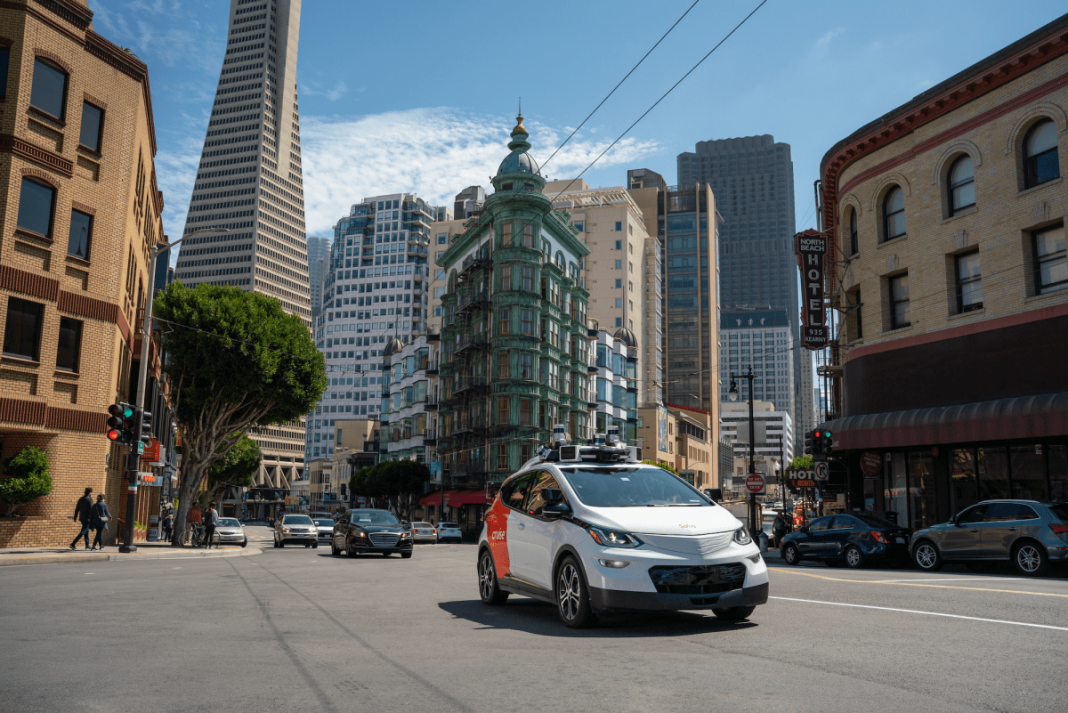San Francisco has formally requested state regulators redo an August hearing that expanded robotaxi permits for Cruise and Waymo, giving both companies permission to widen commercial operations throughout the city 24/7.
The contentious decision was met with much opposition as city agencies and residents questioned the far-reaching impact of the expansions. The permits provide no limitations on geographic area, service hours or fleet size, something opponents say could lead to uncapped numbers of robotaxis roaming the streets. Nor is there a requirement that Cruise or Waymo report the incidents of robotaxis malfunctioning and “bricking” in traffic, blocking the flow of other road users, public transit and first responders.
SF City Attorney David Chiu filed the request on behalf of city transit and planning officials. Chiu had also requested a temporary halt of the expansions days after the California Public Utilities Commission’s (CPUC) hearing, but the agency never responded. The city’s applications, which were filed Monday, reiterate the request for a temporary pause.
“These vehicles may be able to drive themselves, but they can’t regulate themselves,” said Chiu in a statement. “The CPUC must do that to protect passenger and public safety. Since the CPUC’s decision to allow unfettered expansion of AVs for commercial passenger service in San Francisco, AVs have continued to present safety risks and interfere with first responders.”
Chiu urged the CPUC to reconsider its decision, accusing the agency of using a flawed approval process and ignoring public safety hazards and potential environmental impacts of AVs.
“AV technology has a place in San Francisco, but we’re concerned it is not yet capable of safely operating in our complex transportation environment,” continued Chiu.
The CPUC’s primary role is to promote the public interest by ensuring safe, reliable and affordable utility services. As long as Cruise and Waymo’s services meet those requirements, the CPUC doesn’t have the authority to limit them. The agency voted in favor of permit expansions in August because it did not anticipate the robotaxi services to result in significant safety risks.
Both Cruise and Waymo vehicles have been involved in collisions, but so far, no human has died as a result of those collisions, and injuries have been minimal. That said, in the aftermath of the CPUC hearing, a Cruise vehicle was involved in a crash with a fire truck, which injured one passenger. The California Department of Motor Vehicles ordered Cruise to immediately reduce its fleet by 50% while it investigates “recent concerning incidents.”
Most of the other “concerning incidents” recently (and over the past year) have involved mainly Cruise vehicles bricking in the middle of public roads. On August 16, 10 Cruise robotaxis stalled, creating a gridlock in North Beach for about 20 minutes during one of the city’s biggest music festivals.
Cruise’s public backlash came to a head in early September after a San Francisco Fire Department report accused a Cruise robotaxi of blocking an ambulance carrying a passenger who later died, an accusation Cruise denied. Protestors rallied last week outside Cruise’s headquarters in protest. viewed the footage and confirmed that Cruise didn’t hinder the movements of the ambulance. The fire department later clarified that Cruise was not at fault.
However, the damage to Cruise’s reputation was done, and the incident provided a stark image of what might happen if a Cruise vehicle bricked in front of an ambulance on, say, a one-way street with minimal space for the ambulance to get around it.
“The companies are not required to report—or even to track—such important incidents and interference events,” reads the city attorney’s request. “As a result, San Francisco’s analysis of these incidents depends entirely on happenstance reports from members of the public and affected City employees.”
Cruise and Waymo did share some data during an August meeting with city stakeholders and the CPUC to address concerns before the agency’s vote. According to Cruise’s data, from January 1 to July 18, 2023, there were 177 “vehicle retrieval events,” which are instances of a bricked Cruise robotaxi that need to be picked up by a human. The average resolution time was 14 minutes.
Waymo’s data showed 58 retrieval events, averaging 10 minutes for resolution, from January 1 to June 30, 2023.
City officials said those events only make up a subset of the total number of unexpected stops. Between April 2022 and April 2023, the San Francisco Municipal Transportation Agency (SFMTA) collected a total of 261 incidents involving a Cruise vehicle and 85 involving a Waymo. Those incidents include multiple types of driving behavior, including unexpected stops, erratic driving, issues with pickup and drop-off, and collisions.
The city attorney’s office requests that the CPUC not only adopt new reporting requirements for AV companies, but that those reports be made public without redactions. Those reports should collect data on monthly drivered and driverless vehicle miles traveled by county, street intereference incidents, all crashes and high risk violations. The request also asks the CPUC to consider ensuring that AV expansion is granted in an incremental, performance-based manner so that it doesn’t generate “widespread new hazards for travelers and the general public.”
“The CPUC’s decision was the result of a months-long process that saw public input and support from accessibility groups, labor unions, and community advocates — culminating in a six-hour public comment period where the majority supported expanded AV access,” Navideh Forghani, a spokesperson for Cruise, told . “It’s unfortunate to see the city use public resources to bypass that decision and restrict a technology with an excellent safety record used by tens of thousands of SF residents.”
“We fully support the CPUC’s carefully considered decision to authorize Waymo to charge fares for driverless rides,” said Waymo spokesperson Katherine Barna. “We will follow this development closely, and in the meantime, we will continue to work with the city of San Francisco in constructive ways while providing safe and accessible mobility to San Franciscans.”
